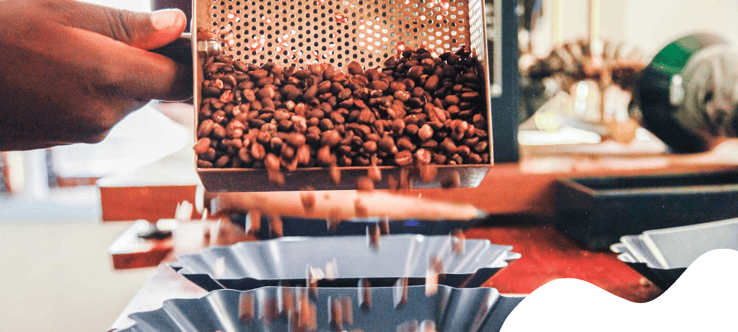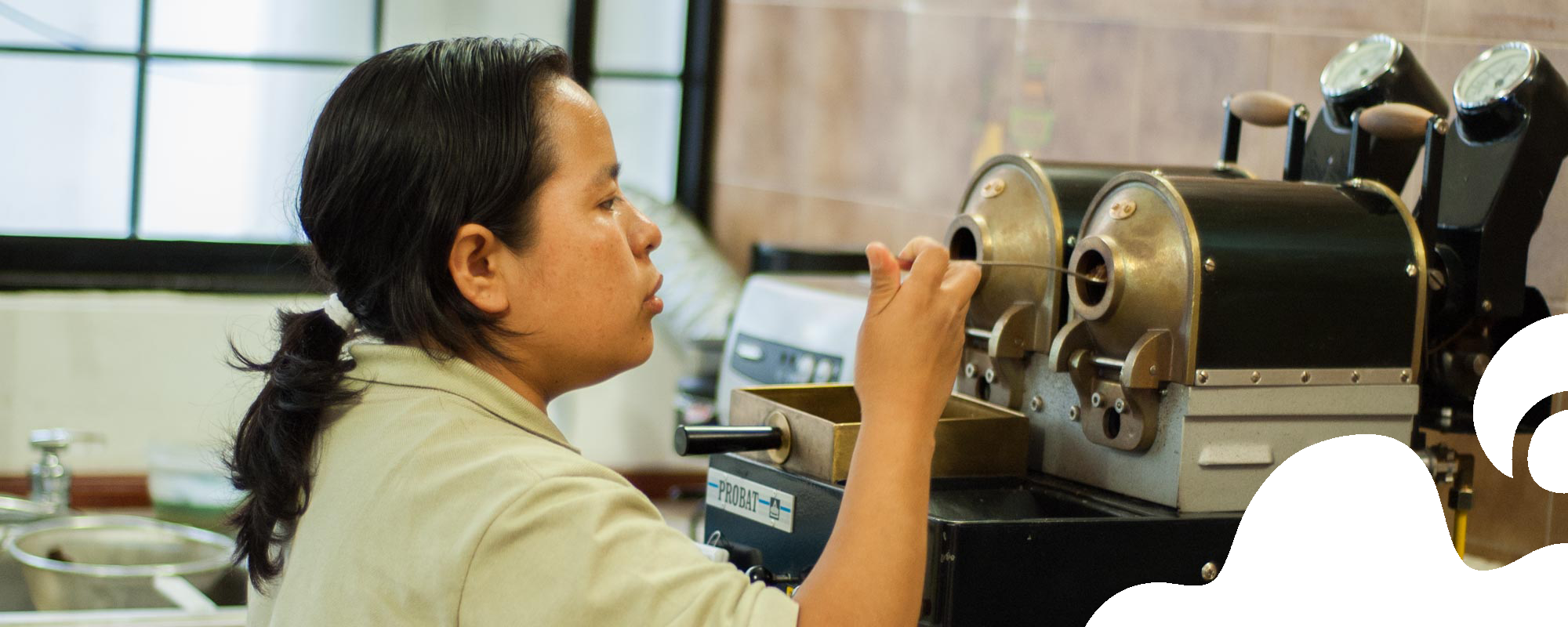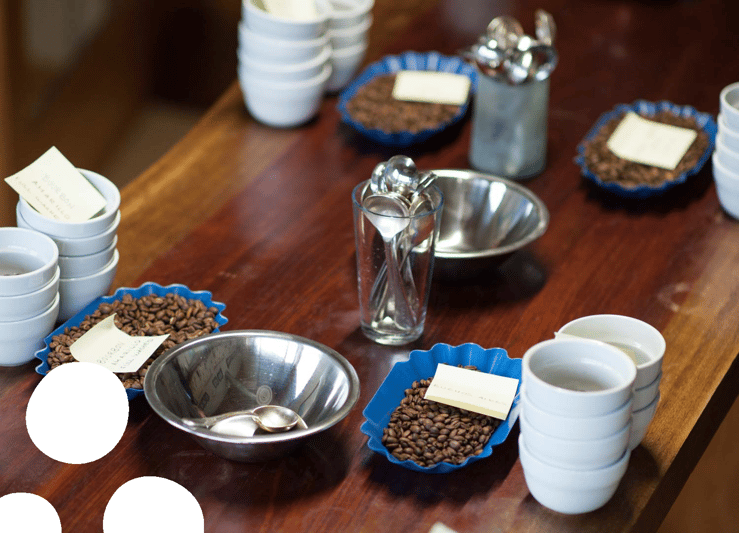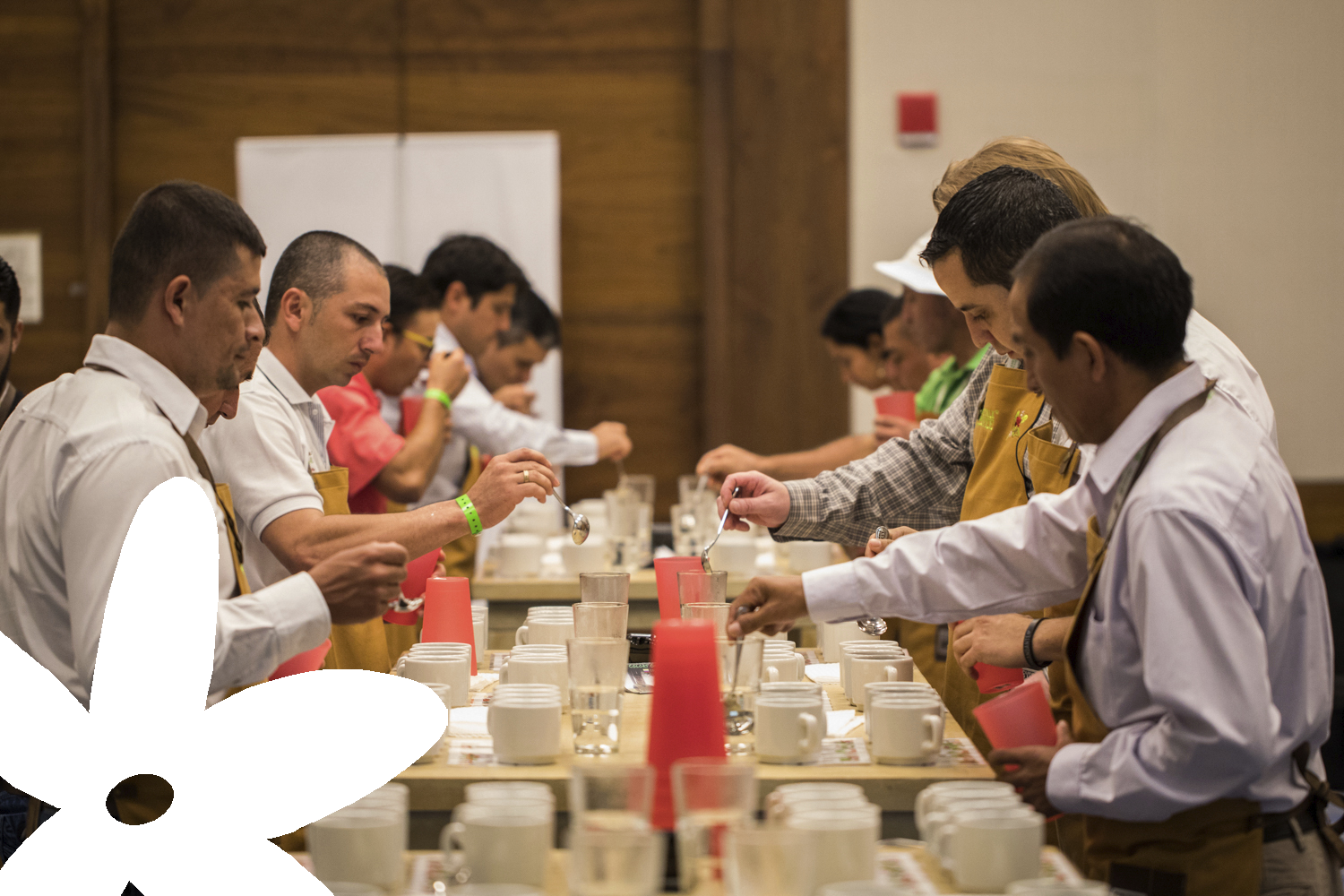
Don’t get us wrong: we love our single-origin brews, but there’s always been a special place in our hearts for a great blend.
These days, however, it seems as though blends have fallen out of fashion in favor of SO-only menus, usually out of a perception of lack of quality or transparency. Yet, at a not-too-distant point in specialty coffee history, blends were the go-to offering for most coffee shops, and many of today’s most well-known specialty roasters built their reputations from the success of their most iconic blends—think Stumptown’s Hairbender, Intelligentsia’s Black Cat, or Counter Culture’s Big Trouble.
We believe it’s high time for blends to make a comeback, and it doesn’t have to be an either/or situation: you can offer lovely single-origins and excellent, high-quality, traceable blends. When done well, we think that a good blend can definitely be more than the sum of its parts. Blends can even offer a few advantages over single-origins, such as making coffee menus more versatile, balanced and approachable. So if you don’t currently have blends on your menu, hear us out: give blends a chance. You might just be surprised to find that your next favorite coffee is a blend of your own making!
To help get you started on your path to blending, we reached out to Emma Taylor, our QC Assistant, and Mark Inman, our Director of Growth—both of whom have extensive roasting backgrounds—to shed some light on blending, from advantages, challenges, choosing the right coffees, and more!
________________________________________________
A Mixed Past
“You can make great blends and have them be competitive,” says Mark. “But I think some roasters may be worried that blending could be seen as a cost-cutting measure, or an indicator that the coffees being used are low quality. There’s a fear that if they start going down that road, that’s the connection consumers are going to make.”
This association to low quality is certainly a valid concern for many roasters on the fence about blending. Customers might assume that blends are simply a way for roasters to cover up less-than-great coffees—especially since this is indeed a regular practice for many large-scale, commercial roasters who work primarily with commodity coffees—whether they be low-scoring coffees, coffees with defects, or past-crop coffees.

It’s also rare for roasters to provide the component details of their blends (in the same way you would find the standard coffee information on a bag of single-origin beans), further confirming the suspicion among wary customers that there might be something to hide. In an era where more roasters are keen to uphold the two pillars of specialty—quality and transparency—it’s easy to see why blends have gotten a bad rap.
The obvious truth, however, is that there’s nothing inherently wrong with blending if you’re using excellent coffees and if you’re being honest with your customers! You’ve worked hard to build a reputation based on quality and traceability, and that will carry through to any new products that you put on your menu. Adding an interesting new blend will more than likely pique the curiosity of your regular customer base.
“It can be a great conversation starter,” Emma points out. “You can highlight lots of different regions and bring them to the attention of your customers. Maybe they didn't know all the different regions that coffee comes from. Blends can be an easy touchpoint for customer interaction.”
Blending Advantages
Here are Mark and Emma’s top reasons for putting blends on your menu:
Consistency and year-round availability
While many customers love to constantly change things up and try new flavor profiles, there are many more who simply treasure reliability and routine; having a blend is an easy way to ensure both. Because a blend’s profile doesn’t rely on any one origin, you can substitute origins with similar enough profiles throughout the year as different regions go in and out of season. A good blend will be what your no-fuss customers remember and recognize, and, over time, become something you’re known for, helping to build brand recognition.

An approachable flavor profile
The average consumer today is likely more open to the brighter, fruit-forward profiles that have come to characterize single-origin offerings; still, not everyone might be ready for an anaerobic natural or a high octane Kenyan. And as much as we love them, there are some days where it’s nice to not have to “think” too hard about your coffee and just enjoy something comforting and familiar.
“A simple, balanced blend can be for everyone,” says Emma. “I feel like they can appeal to every sort of customer. They’re more versatile.”
A chance for coffee creativity
Just because a blend can be approachable does not mean that it needs to be boring; if anything, the opposite is true. Blending presents an opportunity to piece together a profile just the way you want it, like a chef building their own recipes. Nailing the right profile can be tricky and takes practice to master. Learning to craft an excellent blend can be a great way to train your palette and flex your roasting skills.
Mark and Emma also recommend thinking more creatively about blends—not every blend needs to be the same “approachable” profile. Try putting together “seasonal” blends for your customers to look forward to each year: a “summer blend”, for example, could incorporate lots of light, sugary-sweet, citrus-y, fruit-forward coffees that would make for the most refreshing flash-brewed iced coffee. We’ve also seen roasters experiment with region-specific blends such as a Central American blend that highlights the most iconic Central American origins.
Yes, you can blend to “fix” shortcomings
We would never recommend purposely buying low-quality coffees, blending them and then trying to market that blend as something more. That’s just being dishonest, and, ultimately, if you’re not starting with great coffees, blending isn’t going to fix anything.
But if you do happen to find yourself with a coffee that you’re not crazy about, blending can be a useful tool to help you work through that coffee if done thoughtfully.
Blending specifically for cold brew, for example, can be an effective way to use up older coffees—or any coffees that have lost their once vibrant profile— since you can develop a heavier roast profile and the cold brewing process itself tends to mute more subtle fruit character while drawing out more chocolate and caramel notes. Customers also tend to expect cold brew to be on the “bold and rich” side.
On the other hand, you might find yourself with an otherwise great coffee that could just be lacking a certain dimension of flavor, perhaps acidity or body. In this case, carefully blending in the missing flavor components can certainly elevate a coffee and create something better than before.
Blending Tips to Keep in Mind
There’s no perfect recipe for an ideal blend, but there are a few guidelines you can follow when blending. As Mark says, “There’s a lot of thinking and strategizing behind it. You can’t just blend and hope for the best.”
For Mark, there are two general ways to approach blending. “You either have an idea of a flavor in mind that you want to emulate, or you want to correct coffees that you have because they're missing certain components that would make them more complete. For example, let's say you like fruit and nut chocolate bars—something like Theo's—and you want to recreate that as a coffee. Well, you'll need something that's really chocolatey, something that has good dark fruit, and something that has a nutty component. Then you start to mess around with those percentages until you get the flavor you're after.”
Finding the right ratios can be a little tough, and it’s often just a matter of trial and error. As a rule of thumb, Mark recommends blending with no more than four coffees at once, otherwise flavors can start to get muddled and become lost. Likewise, Emma suggests starting with a 50-50 blend and going from there. Here’s a great way to “preview” what a blend might taste like: simply brew each blend component on their own, and then mix-and-match the resulting brews. Just be sure to take lots of notes!

Lastly, you’ll need to decide whether to blend pre or post-roast, with the main consideration being bean density.
“Different coffees have different densities and are going to roast differently,” Emma points out. “If you mix a Colombian coffee with an Ethiopian coffee and then roast, they’re not going to behave the same way. It’s like cooking vegetables: if you roast carrots and zucchini in the same pan, they’re going to be done at different times.”
While it may be less efficient and require more work to blend post-roast, this is the way we would recommend blending in most cases. The exception would be if you were blending coffees with similar densities, in which case you might be able to get away with blending pre-roast.
________________________________________________
Our last blending tip: have fun! As a roaster, blending can be a way to bring some personality and creativity to a side of coffee that can sometimes feel more technical. “I love hearing from people playing with all sorts of coffees and coming up with fascinating blends,” says Mark. “I always learn something new, especially when they blend coffees that I’d never think of blending in a million years.”
“Don’t be afraid to ask questions and engage with other roasters about how they approach blends,” says Emma. “And don’t blend alone! Get other people to taste with you, even if they’re not experts. It just all comes down to taste, taste, taste.”
So get out there and blend away!



.png)
